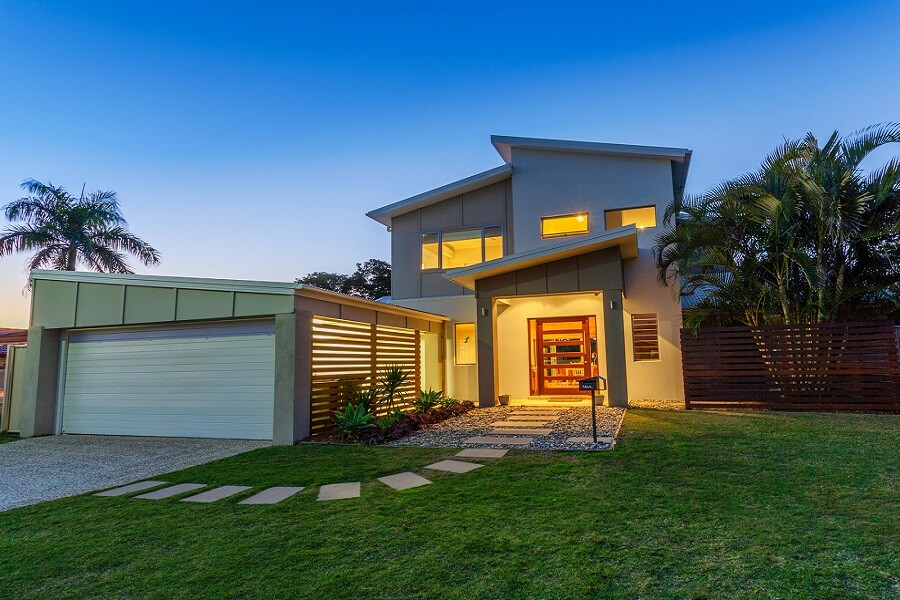In modern urban life, finding solace and connection with nature has become a coveted luxury. Garden homes, with their harmonious blend of residential living and lush greenery, have emerged as an appealing solution for those seeking a tranquil oasis amidst the concrete jungle. In this article, we will discuss the concept of garden homes, exploring what makes them unique and why they have become a sought-after choice for many homeowners.
What is a Garden Home
A Garden Home is essentially a single-family detached residence constructed on a modest plot of land, often not surpassing one and a half levels in height. One distinctive feature of these homes is the provision of amenities like yard maintenance and snow removal, typically overseen by a homeowners’ association.
Beyond the conventional structure of a residence, a Garden Home places a strong emphasis on integrating natural elements into its design. This is evident in the inclusion of well-maintained gardens, courtyards, or green spaces within the property boundaries. In contrast to traditional homes, where outdoor spaces are confined to the front or back yard, garden homes go a step further by seamlessly blending nature into the very essence of the living environment. This fusion of indoor and outdoor spaces creates a harmonious and aesthetically pleasing atmosphere, enhancing the overall quality of life for residents.
Key Features of Garden Homes:
1. Green Spaces:
One of the defining features of garden homes is the abundance of greenery. Residents can enjoy the beauty of nature right at their doorstep, fostering a sense of calm and well-being. Gardens can vary in size and design, ranging from small, private courtyards to expansive landscapes.
2. Integration of Indoor and Outdoor Living:
Garden homes often blur the lines between indoor and outdoor living spaces. Large windows, glass doors, or even open-air concepts connect the interior of the home with the surrounding greenery, allowing residents to enjoy the benefits of nature from the comfort of their living rooms.
3. Community Focus:
Some garden home developments are designed with a strong emphasis on community living. Shared green spaces, communal gardens, and pedestrian-friendly layouts encourage residents to connect with their neighbors and create a sense of belonging.
4. Sustainable Design:
Many garden homes incorporate sustainable and eco-friendly design principles. From rainwater harvesting systems to energy-efficient architecture, these homes often prioritize environmental consciousness, contributing to a more sustainable and responsible way of living.
Benefits of Garden Homes:
- Health and Well-Being: Living close to nature has been linked to numerous health benefits, including reduced stress levels, improved mental well-being, and increased physical activity. Garden homes provide an opportunity for residents to embrace a healthier lifestyle.
- Privacy and Serenity: The lush green surroundings of garden homes not only offer visual appeal but also act as natural barriers, providing a sense of privacy and tranquility. This can be a welcome retreat from the noise and congestion of urban living.
- Aesthetic Appeal: Garden homes are often aesthetically pleasing, creating a visually pleasing environment that enhances the overall quality of life for residents. The beauty of well-maintained gardens and outdoor spaces adds charm and character to the property.
Factors to Consider When Choosing a Garden Home
For those intrigued by the prospect of calling a garden home their own, there are essential factors to consider in the decision-making process.
1. Location:
The geographical setting plays a pivotal role in the allure of a garden home. Whether nestled in the suburbs or part of an urban oasis, the surroundings should complement the desire for natural living.
2. Size of the Garden:
Assess the size and layout of the garden to ensure it aligns with personal preferences and lifestyle needs. Some may prefer a sprawling garden, while others might find joy in a more intimate, low-maintenance green space.
3. Architectural Style:
The architectural style of the home should resonate with individual tastes. Modern, traditional, or eclectic – there’s a wide array of design options to choose from.
4. Amenities and Facilities:
Explore the amenities and facilities offered within the community. From shared gardens to fitness centers, having access to communal spaces enhances the overall garden home experience.
Conclusion
Garden homes represent a harmonious coexistence between urban living and the natural world. As the demand for sustainable and wellness-focused living spaces continues to grow, the allure of garden homes is likely to persist. These homes offer a haven for those seeking refuge from the demands of modern life. Providing a sanctuary where one can reconnect with nature without sacrificing the comforts of contemporary living. Whether as a personal retreat or a community-focused development, garden homes are a testament to the enduring appeal of green living in the heart of urban landscapes.
Read Also:
Types of Houses in the USA
Types of Apartments: Which is Right for You?

